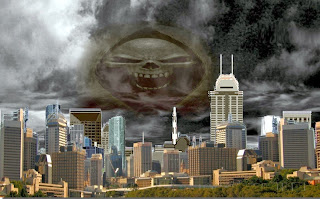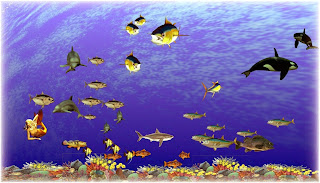E-scrapbooking has other advantages over the traditional approach, too: If you get distracted, just hit save and return to the task when you have time -- no scissors or craft paper to put away. Or if you are commemorating events that involve many friends or family, you don't have to duplicate your efforts by hand -- merely print extra copies or post your creations online where others can view them. Family reunions, birthdays, weddings, holidays, baby showers and pilgrimages to Disneyland can all be enshrined, but don't limit your scope. When e-scrapbooking, you don't have to fill a whole album, so why not artfully commemorate small, everyday events? Kim Liddiard of Denver, for example, is constructing a page about her son's first day on a bike without training wheels. A glance across many Web-based compendiums reveals pages dedicated to seemingly offhand things: a purchase of a new handbag, a rousing soccer game and even a collection of favorite quotes from Mother Teresa.
GET THE E-TOOLS. You'll need photo manipulation software, such as Adobe Photoshop Elements, Corel Paint Shop Pro or Microsoft Digital Image. Apple's iLife suite of photo and movie software has scrapbooking features, as does iRemember. Most of these programs run from about $50 to $100 and can be downloaded and tried for a limited time gratis, allowing you to test each one out. The range of these programs is breathtaking, allowing you to color-correct photos, fill in backgrounds with colors and textures, and render text in fancy fonts.
Also, many Web sites offer thematic templates, such as color-coordinated mats and frames. Expect to pay $2 or $3 per template. But take heart: Unlike the paper templates sold at art stores, electronic templates can be reused, says Amanda Behrmann, a founder of the Digital Scrapbook Place ( http://www.digitalscrapbookplace.com/ ), a resource for scrapbook starters.
FIND SOURCE MATERIAL. Photographs are the centerpieces for most scrapbook pages. If you have a digital camera, importing the photos should be a snap. Regular photographs can be scanned -- most electronic stores sell good, basic flatbed scanners for less than $100.
Physical artifacts such as ticket stubs, maps, program guides, menus or even war medals can be scanned to complement your digital layout. You can also write your own commentary. What were you feeling at the time? Or pick a song lyric or poem appropriate to the moment. For a tribute page to her grandfather, Johanna Berry of Washington state transcribed stories he recorded on tape and paired them with a photo. Editing is important -- keep the text short so the page won't look cluttered. "Let the pictures do the talking," Thiessen says. Look for the most appropriate font -- some can be downloaded from the Web (try http://www.computerscrapbook.com/index.html ) -- or write the message by hand.
INDULGE YOUR CREATIVE WHIMS. With the materials in hand, now comes the fun part -- crafting a page that perfectly accentuates the subject. Put the viewer in the moment, relating the details and the mood of the event.
Find colors and textures that complement the subject matter, as well as the colors in photographs. A page about a day trip to Baltimore's Inner Harbor could have crabs scurrying about. Experiment! "The undo button is your friend," Behrmann said.
Some software, such as Apple's iLife, can even add music to the presentation, giving a full multimedia feel. When Thiessen documented some family time at the pool, Bobby Darin's "Splish Splash" served as the soundtrack.
SHARE THE RESULTS. Save the final creation as an image file, which then can be displayed in a number of ways -- on a Web site, as a slideshow from a DVD or CD, or printed out and pasted in a regular scrapbook. Many CD and DVD burning software programs and online services can turn your scrapbook pages into an album that can be viewed on the computer or with a standard DVD player as a slideshow.
For the Web, shrink the page to a height of 500 or 600 pixels, so it will fit in a browser. Load the image onto your own Web site or blog,








 on the Windows operating system
on the Windows operating system